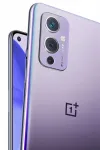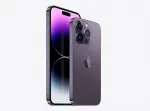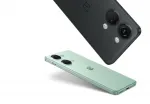The Google Pixel 3, with the model name 'Google Pixel 3', is a flagship smartphone from the American tech company Google. Released in October 2018, this device is known for its powerful performance, impressive camera capabilities, and sleek design. Let's take a closer look at its features and specifications to understand what makes the Google Pixel 3 a stand-out device.
The body of the Google Pixel 3 is designed to be sturdy and durable, with an IP68 rating for dust and water resistance. This means that the device can withstand being submerged in water up to a depth of 1.5 meters for 30 minutes without sustaining any damage. The phone also comes with a nano-SIM and eSIM, making it convenient for users who need to switch between two numbers.
In terms of design, the Google Pixel 3 comes with a glass front and back, both protected by Gorilla Glass 5. The aluminum frame adds to the premium feel of the device while also providing strength and durability. The device weighs only 148 grams, making it lightweight and comfortable to hold. Its dimensions of 145.6 x 68.2 x 7.9 mm make it a compact and pocket-friendly device.
The Google Pixel 3 has a 5.5-inch P-OLED display with a resolution of 1080 x 2160 pixels and an 18:9 aspect ratio. This results in a sharp and vibrant display with a pixel density of 443 ppi. The screen also comes with an always-on display feature, allowing users to view notifications and time without waking up the device.
Under the hood, the Google Pixel 3 runs on Android 9.0 (Pie) and is upgradable to Android 12. It is powered by an octa-core Qualcomm SDM845 Snapdragon 845 processor built on a 10nm process and is paired with an Adreno 630 GPU. This combination ensures smooth and lag-free performance, even when running multiple apps simultaneously. As for storage, users can choose from two options - 64GB with 4GB of RAM or 128GB with 4GB of RAM. The device also supports UFS 2.1 technology, providing faster read and write speeds.
One of the highlights of the Google Pixel 3 is its camera capabilities. The device features a 12 MP single rear camera with an f/1.8 aperture, 1/2.55" sensor, and 1.4 µm pixel size. It comes with features such as dual-LED flash, Pixel Shift, Auto-HDR, and panorama, allowing users to capture stunning and high-quality images. The rear camera is also capable of recording 4K videos at 30fps and 1080p videos at 30/60/120fps with gyro-EIS.
On the front, the Google Pixel 3 has dual 8 MP cameras with an f/1.8 aperture and 1.4 µm pixel size. These cameras come with features like Auto-HDR, allowing users to capture clear and detailed selfies. The front camera can record 1080p videos at 30fps.
The Google Pixel 3 comes with a non-removable Li-Po 2915 mAh battery that supports 18W wired charging and PD2.0. This means that users can quickly charge their device and get back to using it without having to wait for extended periods. As for connectivity, the device offers a variety of options, including Wi-Fi 802.11 a/b/g/n/ac, Bluetooth 5.0, NFC, and USB Type-C 3.1.
Other features of the Google Pixel 3 include a rear-mounted fingerprint sensor, accelerometer, gyro, proximity, compass, and barometer. It also supports various network bands, including GSM, CDMA, HSPA, EVDO, and LTE.
In conclusion, the Google Pixel 3 is a well-rounded device with a robust build, powerful performance, and impressive camera capabilities. Its compact size and sleek design make it a convenient and attractive option for users looking for a high-end smartphone. Plus, with regular software updates and upgradability to Android 12, the Google Pixel 3 is a future-proof device that continues to remain relevant even after several years since its release.









